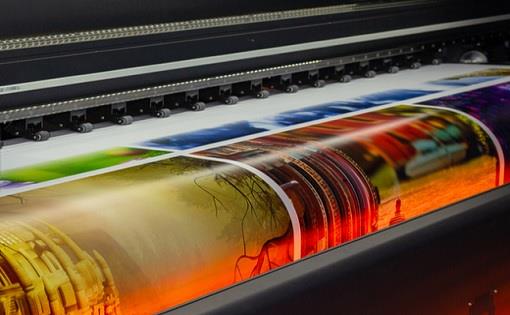Digital Printing Fundamentals Explained
An Unbiased View of Digital Printing
Table of ContentsThe Only Guide to Digital PrintingThe 5-Minute Rule for Digital PrintingThe Single Strategy To Use For Digital PrintingAn Unbiased View of Digital PrintingThe Buzz on Digital PrintingThe 9-Minute Rule for Digital PrintingDigital Printing for DummiesAll About Digital Printing
Personalization additionally allows companies to stick out in a jampacked market by producing special marketing materials that separate them from their competitors. One of the main advantages of digital printing is the ability to print variable information. Each printed piece can be special, permitting businesses to create personalized marketing materials that talk straight to their target market.Digital printing likewise enables modification in the style of advertising and marketing materials. With electronic printing, businesses can produce layouts that are unique and tailored to their particular requirements. This can consist of tailored graphics, typefaces, and formats that can help to separate them from their competitors. An additional advantage of electronic printing is the ability to publish on need.
Digital Printing Fundamentals Explained
By publishing smaller quantities of advertising and marketing materials, services can decrease waste and avoid the need for excess inventory. Digital printing is also versatile.
By utilizing different products and layouts, services can create unique advertising and marketing materials that stand apart from their competitors and draw in focus from their target audience. Digital printing also supplies uniformity. With traditional printing techniques, there is often variant in between prints as a result of distinctions in ink coverage, pressure, and various other aspects.
This consistency can aid construct customer trust and credibility, revealing that business is committed to giving top notch materials. Uniformity is especially crucial for businesses that wish to build consumer depend on and credibility. By ensuring that every print is constant, organizations can show that they are committed to providing high-grade materials and taking notice of the details.
Some Known Details About Digital Printing

Additionally, digital printing creates much less waste because it can publish on demand and in smaller quantities, reducing the demand for excess inventory and materials. Digital printing also utilizes much less energy compared to typical printing approaches. Digital printers do not call for as much power to run, as they do not require to warm up as a lot or make use of as much power to run.
The smart Trick of Digital Printing That Nobody is Discussing

Offset printing requires a plate for each shade published. Traditional offset printing is a print approach that uses aluminum plates to move ink onto a rubber sheet (frequently referred to as a "blanket").
More About Digital Printing
Although the tools's set-up costs are high at first, extra units come to be fairly less costly as the amount increases. Balanced out printing permits a broad array of print materials to be utilized throughout manufacturing. It permits the printer to use various paper types, custom finishes, and various inks. The high-quality images generated with offset printing make it the favored technique, particularly among graphic designers, when looking for the greatest shade recreation, detail, and professional-looking prints.
The essential printing technique continues to be balanced out. For digital inkjet printing, ink is moved straight onto the surface. As opposed to image source counting on light weight aluminum plates and rubber coverings to transfer a picture, digital printing makes use of fluid ink during manufacturing. Standard home inkjet printers are just one of the most common digital printing methods.
The 4-Minute Rule for Digital Printing
Because countered printing can blend custom color inks for each job, it will naturally get the shades spot-on. Count on countered printing for clean, unique kinds and pictures without touches or spots.
It costs a whole lot to begin a balanced out job. You need to invest cash special info into producing the plates, which takes some time. As soon as you have actually spent it, all of the products are all set to go, and you'll invest much less on big balanced out jobs than a digital print, which is concerning the very same per item no matter how huge the job obtains.
Digital printing is less pricey for low-volume jobs. The price per unit goes down for digital printing, so at some point, they crisscross. Altering info within a solitary print task.
Digital Printing Things To Know Before You Get This
While electronic printing or inkjet printing is the favored choice in the present times, there are engaging reasons to convert from countered to electronic printing systems. When printing countered or electronically, critical decisions and procedures are involved in color matching.
Whichever the situation, the color will need to be matched. Shade matching of digital printer ink is no more challenging with dyes and pigments. Industrial inkjet printing offers versatility for printing on various substrates. Digital printing is suitable for consumers who do not require longer runs and warehousing materials.

One benefit of electronic printing is picking from a variety of electronic substratums. With countered printing, substratums comprise, generally, 30% of the price of the job. With digital printing, the cost of the substratum in the general job is small. This permits more selections than ever, and that's good for marketers and companies.
Facts About Digital Printing Revealed
drop-on-demand is the second printing technology to consider. Continual inkjet systems need significant upkeep, more driver training, and greater downtime. Equipment prices in inkjet printing are much reduced than countered printing as there are no plate-making, plates, and press expenses. Beyond the capital expenditure, the prepress tools and printing machine need extremely experienced operators in countered printing, which includes labor prices.